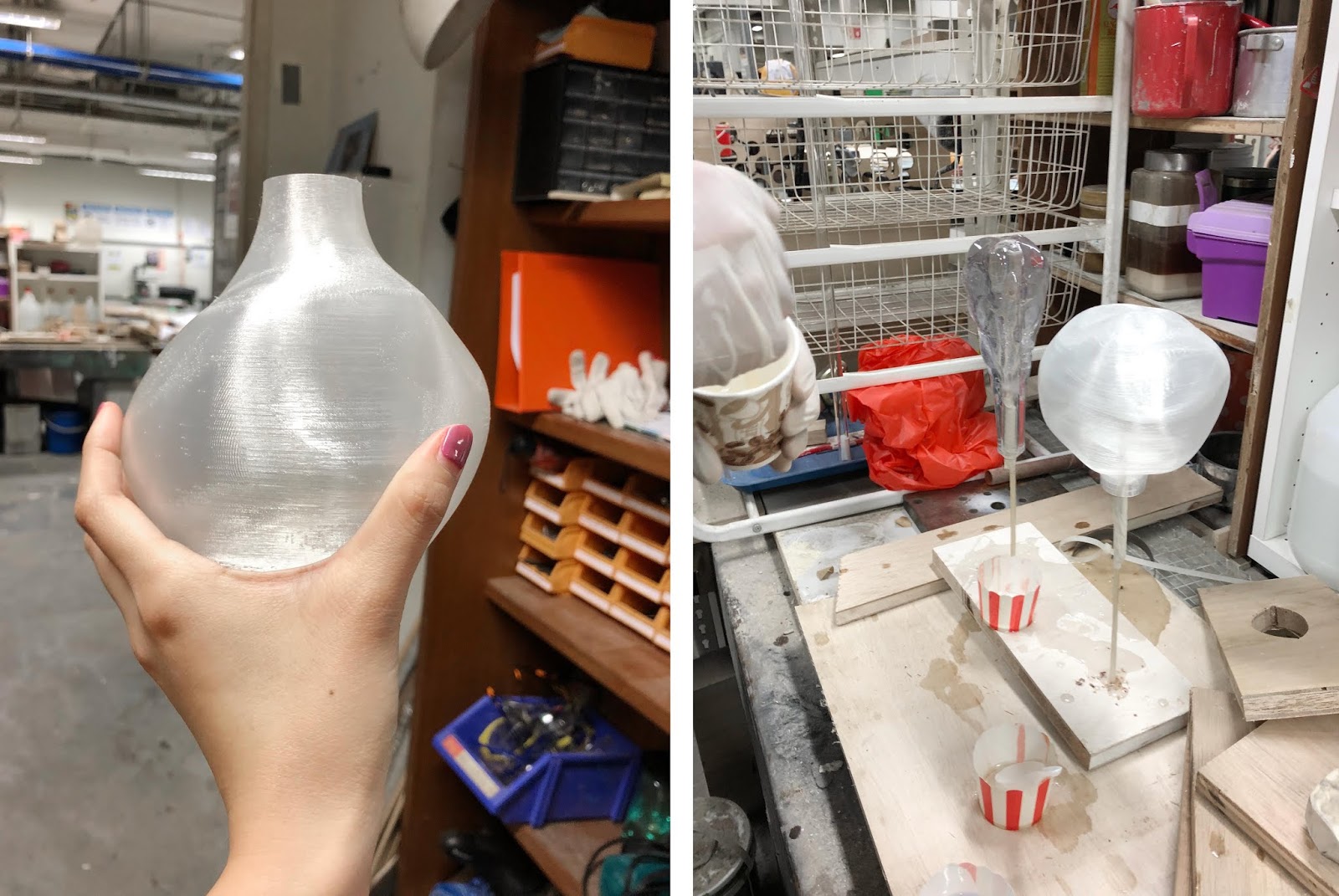As we move into production of the resin droplets, we also tried to improve the pulsing speed of the LED light at the same time.

The LED light I'm testing here is cool white and 12V. Arduino can only support up to 5V power so for 12 Volt LED lights, power need to be supplied separately. We will be testing with different LED light colours with an additional power supply and set it up with the programming for the pulsing. The reason why we are not considering to get 5V led lights is because we require more than 1 droplet and Arduino will not be able to power all of them so there is no point to get 5V.
And since we are already looking to power the motors with an additional power supply, we might as well power the LED lights at the same time.
I went to Simlim with Jason to buy 12V LED lights in red colour, why I decided on red colour is explained in this post. We are also looking to test with other warm coloursWorking on the code
The set-up with an additional power supply
Testing with the resin droplet
Pulsing effect
While working on the kinetic light set-up with multiple resin droplets, I thought that I needed a back-up plan in the event that the kinetic light set-up does not work, it was either:
1. A design case for the pulsing light, instead of using this globe
2. or Spinning of an individual resin droplet
We 3D printed another uneven surface design, this time its much larger than the previous droplet as if its just 1 individual spinning, it needs to be larger for the light effect to be prominent.
We did surface coating using epoxy resin
Using foam boards to create the container for the silicone rubber pouring up next.










No comments
Post a Comment